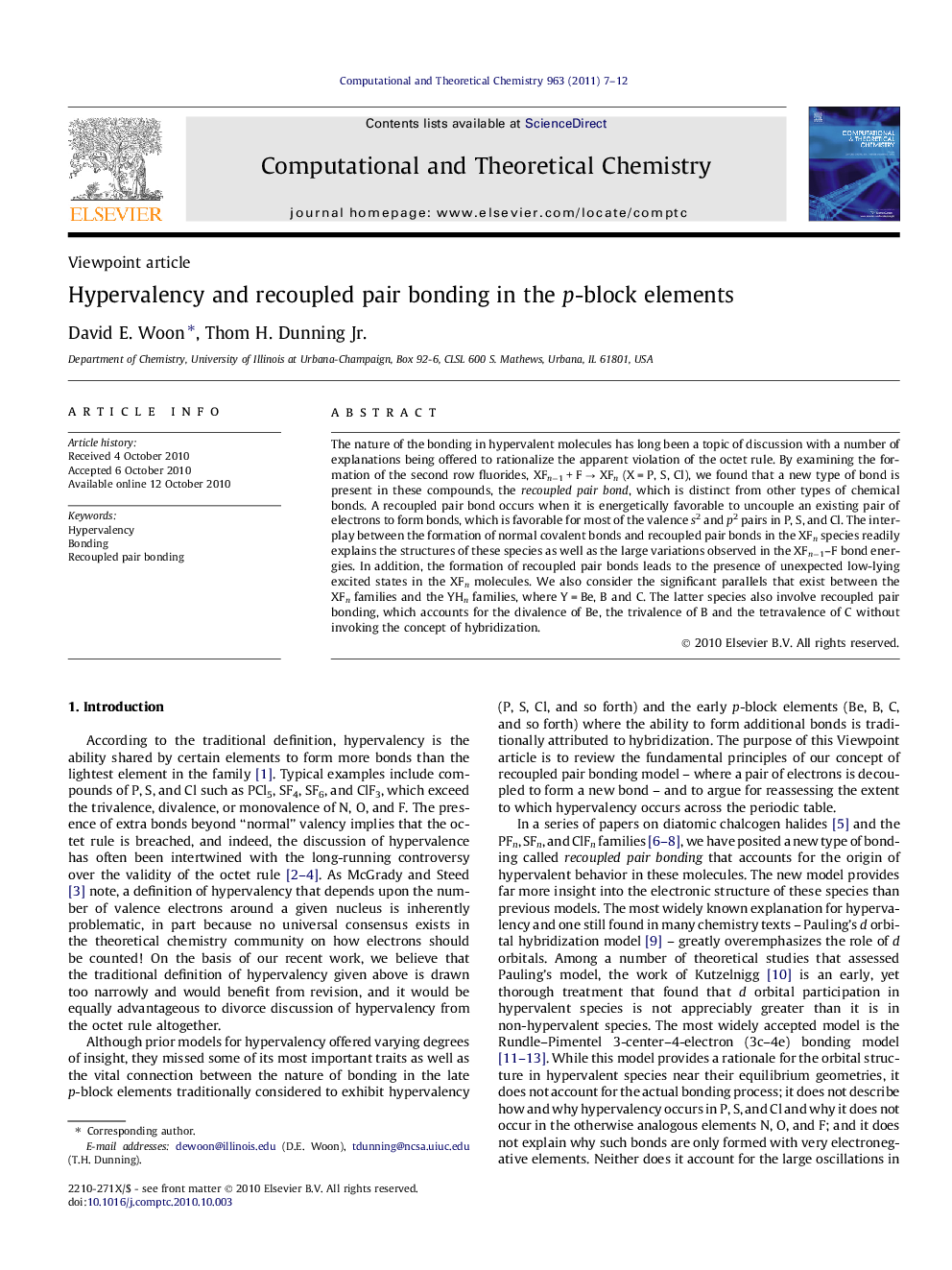| Article ID | Journal | Published Year | Pages | File Type |
|---|---|---|---|---|
| 5395417 | Computational and Theoretical Chemistry | 2011 | 6 Pages |
The nature of the bonding in hypervalent molecules has long been a topic of discussion with a number of explanations being offered to rationalize the apparent violation of the octet rule. By examining the formation of the second row fluorides, XFnâ1 + F â XFn (X = P, S, Cl), we found that a new type of bond is present in these compounds, the recoupled pair bond, which is distinct from other types of chemical bonds. A recoupled pair bond occurs when it is energetically favorable to uncouple an existing pair of electrons to form bonds, which is favorable for most of the valence s2 and p2 pairs in P, S, and Cl. The interplay between the formation of normal covalent bonds and recoupled pair bonds in the XFn species readily explains the structures of these species as well as the large variations observed in the XFnâ1-F bond energies. In addition, the formation of recoupled pair bonds leads to the presence of unexpected low-lying excited states in the XFn molecules. We also consider the significant parallels that exist between the XFn families and the YHn families, where Y = Be, B and C. The latter species also involve recoupled pair bonding, which accounts for the divalence of Be, the trivalence of B and the tetravalence of C without invoking the concept of hybridization.
